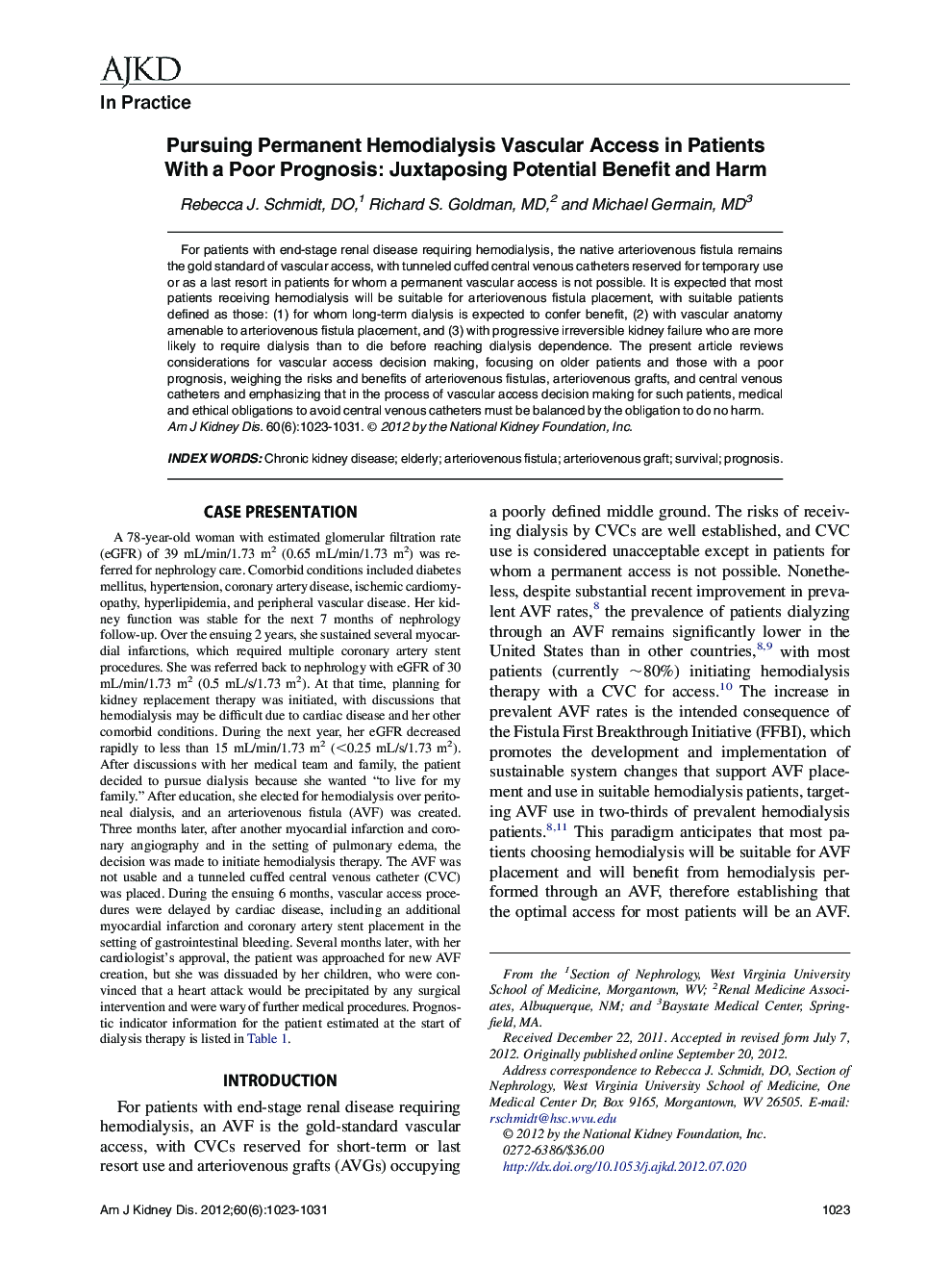| Article ID | Journal | Published Year | Pages | File Type |
|---|---|---|---|---|
| 3849007 | American Journal of Kidney Diseases | 2012 | 9 Pages |
Abstract
For patients with end-stage renal disease requiring hemodialysis, the native arteriovenous fistula remains the gold standard of vascular access, with tunneled cuffed central venous catheters reserved for temporary use or as a last resort in patients for whom a permanent vascular access is not possible. It is expected that most patients receiving hemodialysis will be suitable for arteriovenous fistula placement, with suitable patients defined as those: (1) for whom long-term dialysis is expected to confer benefit, (2) with vascular anatomy amenable to arteriovenous fistula placement, and (3) with progressive irreversible kidney failure who are more likely to require dialysis than to die before reaching dialysis dependence. The present article reviews considerations for vascular access decision making, focusing on older patients and those with a poor prognosis, weighing the risks and benefits of arteriovenous fistulas, arteriovenous grafts, and central venous catheters and emphasizing that in the process of vascular access decision making for such patients, medical and ethical obligations to avoid central venous catheters must be balanced by the obligation to do no harm.
Related Topics
Health Sciences
Medicine and Dentistry
Nephrology
Authors
Rebecca J. DO, Richard S. MD, Michael MD,
